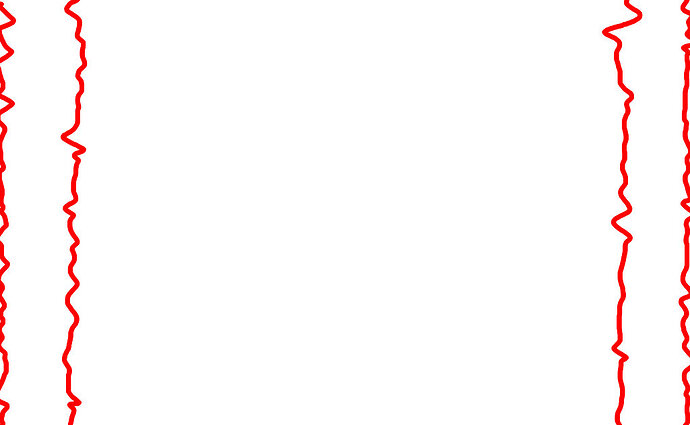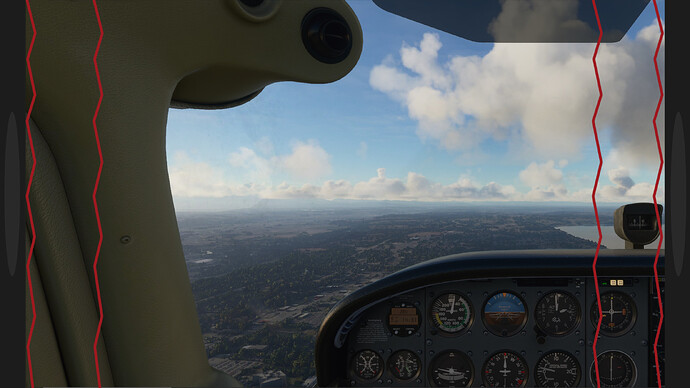I got my hands on a slightly used Crystal. As of having tried it once, going from my tethered Pico 4, I am disappointed.
- It can run out of battery? I thought the whole point was that it is a PCVR headset with no less than three cables and that it didn’t need a battery. The new Crystal Light doesn’t even have one. It said low battery and just shut down. MSFS froze and I had to force quit it. Swapped the battery but couldn’t get the headset connected again. Just a blue light.
- The Pimax App launched MSFS but the sim didn’t recognize the headset. Had to install PimaxXR to get VR running.
- Much heavier than the Pico 4, but I knew that.
- Stuttering along both edges when turning my head. And a short distance in from both edges. All text is unclear while turning my head. Does this have to do with refresh rate? It is set at 90, same as my Pico which has none of this stuttering.
- MSFS freezes in all the same places as it did with my Pico, so VD wasn’t the problem at least.
- Very clear picture as long as I hold my head fairly still. But 1-5…
I hope most of this is just noob mistakes on my part, or else it is not staying long.
Probably a good idea to list your PC specs imho.
Except for 4 and 5. None of this is performance related. But yes, it might help. i9 14900KF, 32 Gb RAM, RTX 4070 Super OC.
Got it to reconnect. Had to re-seat the DP cable on the headset. If that keeps happening it’s a re-sell.
If it needs a battery AND three cables it is also a re-sell btw.
Hi,
Here is how I use the Crystal.
Start the computer.
Launch Pimax Client. Do NOT launch MSFS from the Pimax Client. Wait until the Crystal is tracking, the hmd symbol and the battery symbol in Pimax Client will be steady green. Sometimes the Pimax Client will attempt repeatedly to connect with the Crystal. If after say five minutes there is still no connection made, check that the cables are securely plugged in.
Launch MSFS using the desktop icon in 2d and select your aircraft and scenery.
After your aircraft is loaded, switch from 2d to VR.
As for the battery, I use the cable from the hub for the charger and plug it directly into the side of the hmd instead of the charger.
The quality of the hub connectors is really poor. Make sure that all cables are properly seated.
Hope this helps.
Learning curve for sure using Crystal. I use Duck Tape to keep all connectors secure, sad but it works from day one.
But no answer to my actual question… Does it need the battery to operate? Does the battery not charge while plugged in using the USB/DP cable and hub? Battery is fine as long as it does not deplete while plugged in. I do not plan on using this untethered.
Follow the install procedures carefully.
I’ve had mine for quite a while but the order of plugging in the hub, hub cables and dp cable mattered for me.
Like Super…, I launch the pimax before MSFS. I hold the power button down for 3 seconds and the crystal usually connects on the first try.
Also do not use the pimax home setting, set this to off. There is a memory leak on this setting that could cause CTD’s. https://www.avsim.com/forums/topic/641909-pimax-crystal-memory-leak/
I use the supplied hub (only the dp cable attached to the crystal) and my longest usage time was about 3 hours and I still had over half the battery remaining.
Crystal requires battery to operate. With both USB cables connected to Pimax hub, hub connected to USB 3.0 PC port and to power I can obtain 4+ hours of flying on single battery. Battery discharges at a slow rate as it is being partially charged via the hub.
@GeirRosset As others have mentioned, even when plugged in the battery will still drain during use. If your sessions are never longer than 3 or 4 hours (with a similar length break in between) then it’s not much of an issue, but if they are long then you can get a QC 3.0 usb fast charger (30w output or higher) and run a secondary 6m cable from that into the side usb-c port on the Crystal. This will give you effectively unlimited charge (well 12-14 hours worth at least) but it’s somewhat impractical unless you can attach your cables to a pulley system on the ceiling to take most of the cable weight. I’ve done this and it works fine, but I generally don’t bother as I rarely have more than 30 mins to sim for fun, hehe.
Begs the question though… if they can make the Crystal Light without battery and XR2 chip but still perform inside out tracking and reprojection (when it works), I find myself wondering why they can’t just give an option on the original Crystal to disable the XR2 chip in tethered mode and let us run “infinite charge mode”.
The “unofficial” Pimax discord server has lots of discussion on the best setup for that secondary usb charger and wire setup, but it’s ever evolving and I haven’t had time to delve into all of it.
Hope that helps!
Thanks you so far. I n e v e r fly more than three hours. I’d be lucky to get 2 hours uninterrupted. So I guess that is fine then, as the battery can be hot swapped in the off chance that I am still flying after 3+ hours. Being able to disable the XR2 chipset is a good idea. I’ll probably never use this standalone.
Refresh set to 90, haven’t tried 72 Hz mode (72 works fine for me in the Pico 4 without me seeing any flickering).
Pimax Home disabled, and MSFS set to DLSS with MSFS quality settings set at just a little higher than recommended for an RTX 3080 which should leave plenty of headroom with the 4070 Super OC.
But…
Still getting that slight flickering along both edges when turning my head. And I am not turning my head very fast either. Far from DCS dogfighting moves. Anyone else seeing this? My view in the headset resembles the below drawing with red lines being where I see the flicker. I also see the (in)sides of the headset on both sides. Like wearing a diving mask. Those two circular shapes are a bit disturbing. I was hoping for less of this than in my Pico.
So far this is far from being eight times better than my Pico as the price would suggest, not even twice as good I’d say. I wanted a PCVR headset with DP in the hopes of skipping one layer of complexity with Virtual Desktop, thinking that it was more like wearing a second monitor on my head, but this has as far as I can tell at least as many layers as the Pico, and at least the same amount of possible sources of error. But of course as with most other things that price curve rises exponentially for the last little bit of display quality on the high end.

